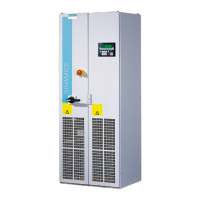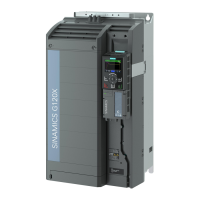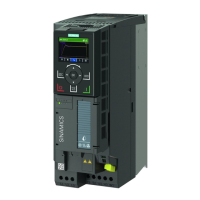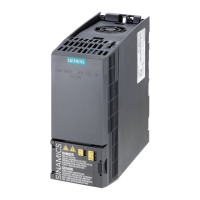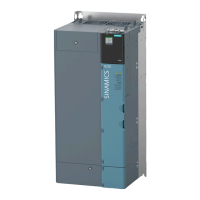Grounding and high-frequency equipotential bonding measures
The following gure illustrates all grounding and high-frequency equipotential bonding
measures using an example with the SINAMICS G110M.
7UDQVIRUPHU
)RXQGDWLRQJURXQGPHVKHGQHWZRUN
'ULYHQPDFKLQH
6HFRQGOHYHOGLVWULEXWLRQ
ZLWKHTXLSRWHQWLDO
ERXQGLQJ3(
&RQYHQWLRQDOJURXQGLQJV\VWHPZLWKRXWVSHFLDOKLJKIUHTXHQF\SURSHUWLHV
3(
/
/
/
3(
/
/
/
Figure 4-9 Grounding and high-frequency equipotential bonding measures in the drive system and in
the plant
The ground connections ① represent the conventional grounding system for the drive
components. They are made with standard, heavy-power PE conductors without special high-
frequency properties and ensure low frequency equipotential bonding as well as protection
against injury.
The line supply cable of the converter can be unshielded. The converter has to be grounded by
this cable.
The converter enclosure provides high-frequency equipotential bonding between the converter
and the motor.
The connection provides solid bonding for high-frequency currents between the metal body of
the converter and the unpainted metal mounting frame. This connection should be made with
short, nely stranded, braided copper wires.
Installation
4.3 Electrical Installation
Distributed converter for SIMOGEAR geared motors
64 Operating Instructions, 10/2020, FW V4.7 SP13, A5E31298649B AL

